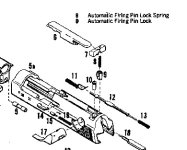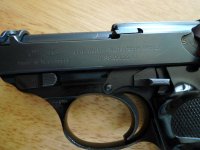"As a word of caution with any P38 or P1 to be safe .... also (like the early Model 39/59) while the safety lever arrests and blocks the firing pin when engaged IIRC the pre P4 versions can be inertia fired if dropped with the safety in the off position."
16 posters will probably prove me wrong ... but I think they all had the firing pin block.
16 posters will probably prove me wrong ... but I think they all had the firing pin block.



